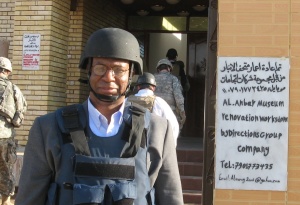It is merely a coincidence, of course, that at the last minute Week 4 gets switched to life-without-Dave, and trendwatching.com sends me their weekly email entitled, “no interface.” It does beg the question, do we need a teacher/professor/facilitator, in effect, a human interface, a Dave, in order to learn and to process information, or can we truly transform our interactions by minimizing the need for a mediator between the limited known and the vast unknown?
These is an interesting spiritual aspect to all this, as well as a purely consumerism appeal. From trendwatching.com’s May 2015 Trend Briefing: “Connected people – they, you, all of us – are trapped in a paradox: the digital information and functionality that we love is becoming so behaviorally, socially and cognitively intrusive that it’s (the interface) (italics mine) starting to impact on our relationships, productivity, ability to concentrate – we could go on. And yet we still want more!”
I am reminded of religions and the prophets, saints, priests (rabbis, imams, etc.) who intercede between the people at the bottom and the deity at the top. Do we really need their intercession? Is this the question? Or am I taking it too far? Do we need commercials and advertisement (and brand hypnosis) to tell us what buy to bring us happiness and satisfaction. Nirvana? Or am I taking it all too far?
Closer to home (because I made my peace with religion and even with consumerism (modern day religion) a long time ago), in school and out here in the world we librarians talk about the convergence between libraries, archives and museums, affectionately known as LAM convergence. While there are many similarities in the way we each store, transmit and convey knowledge and information, what most distinguishes us one from the other is the degree of mediation required, with archives requiring the highest (the archivist brings the user what he/she requires in the form of documents/records), museums only requiring a high mediation at the front end (curation/design of exhibits), and libraries providing the least visible mediation (the books are on the shelf, the e-resources are in the database, find it and get it).
Where is Dave? Do we need him? Or more to the point, do we need to see him, visibly present?
Similarly, the use of increasingly functional and descriptive icons reduces dependence on the interface for standard transactions. One-touch interactions. Hieroglyphics here we come! What about facial recognition technology advances? Might we one day be able to fire up the iMac, turn on the camera, and get the counseling we need based on our facial expression’s deviation from the standard? Our own standard? Our own norm? (Didn’t expect that, did you?).
And will we then be marketed stuff based on our moods, again, as reflected in our facial expressions? More questions than answers …
I fear I have missed the rhizomatic point.
p.s. We need teachers and facilitators, just like we need librarians, archivists and museum folks, just like a traveler needs navigation aids/signs/landmarks. Not everyone can read the hieroglyphics. My vote is to keep Dave on the island (in case there was ever any doubt…).
p.s.2. Several items died in my garden as a result of the season’s last frost. I probably planted too soon. I lost all the above-ground stuff: squash, cucumbers, cantaloupe, but the underground stuff is still flourishing: beets, potatoes, carrots. Oh yeah, and somehow the sunflower sprouts survived. I was disheartened for a couple of weeks, somewhat surprised I had made such an emotional investment, and I stayed away from the garden. Two weeks passed. Today, this morning I stopped by on the way to work. Everything that survived the frost is flourishing. The plants didn’t need me at all. So tomorrow is re-planting day.
p.s.3. Inspired by Helen’s post in Five Flames 4 Learning, I went to the library and looked up an article I remember reading in high school, “The Tropical Rain Forest.” Here is one memorable passage:
Secondary succession, the process that leads from cleared land to a stable, or climax, community, is illustrated schematically. The first invaders are weeds, tall grasses, vines, and seedling trees. All these form a dense ground cover but the trees soon begin to overtop the other vegetation. The first trees are species that colonize clearings quickly because their seeds are dispersed more efficiently than those of the permanent forest trees. They thrive in full sunlight and are intolerant of shade. Most of them reach maturity and die in 15 to 20 years; often only a single generation grows because the trees are unable to regenerate in their own shade. Growing below the pioneer trees, and eventually replacing them, are more long-lived and more varied species, which establish a community that in time begins to resemble the primary forest. A disproportionate number of light-demanding trees remain for many years, however; these are replaced only very slowly by trees more tolerant of shade. The succession may take centuries to complete.”
Richards, Paul W. “The Tropical Rain Forest.’ Scientific American , December, 1973, pp. 58-67
Here is the whole article: Tropical Rain Forest SciAm 12_1973




